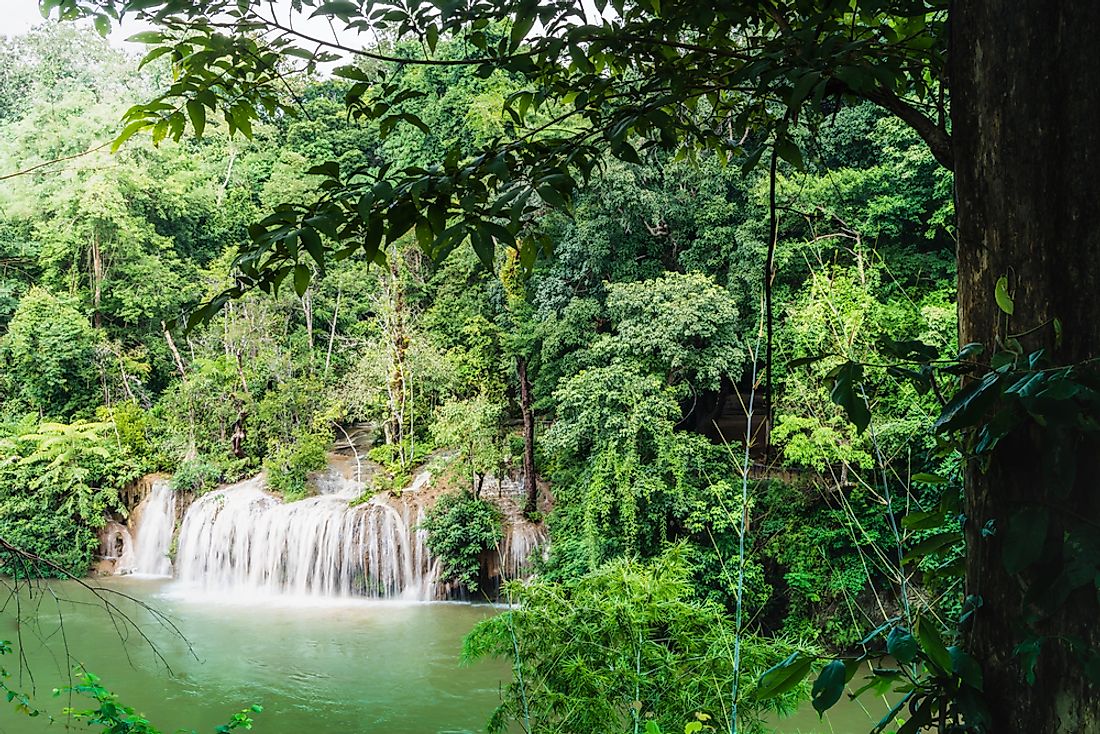The Bumblebee Bat: Animals of Southeastern Asia

Kitti’s hog-nosed bat, informally known as the bumblebee bat (Craseonycteris thonglongyai), is the world’s smallest mammal and the smallest bat species in the world. The average size of the bat is similar to that of an adult bumble bee. Identified by their distinct small body sizes, unique behaviors, and small colonies, bumblebees spend their majority of their lives roosting in caves.
Reproduction
Like other mammals, the bumblebee bat gives birth and takes care of its offspring for up to a year until they are old enough to fend for themselves. Mating occurs once per year during the end of winter in late April to May. By spring, females are ready to give birth to their young ones and breastfeed their young with the pair of nipples on their chest. Usually, the bumblebee breed once per year and give birth to one offspring annually. The young ones are attached to their mother’s waist until they develop wings to roost in nursery caves as their mothers forage.
Behavior
Kitti’s hog-nosed bats live in small colonies of 100 to 150 members with each colony occupying its own cave. Despite this congregation, the bumblebee bats are not social and will spread out when roosting instead of moving closer to each other like other species. Mothers perch in nursery caves with their offspring. They are motile species skilled for long distance flights and they use echolocation to help them traverse the environment. Bumblebee bats are usually active for approximately 18 minutes at dawn and thirty minutes at dusk.
Habitat and Range
Bumblebee bats live in Southeast Asia. They mostly occupy the mountain ranges of Bilauktaung and the tropical forests of Sai Yok National Park in Thailand, and the eastern parts of Burma. Preferentially, they roost on the top of limestone caves for warmth, but neither defend nor maintain their territories.
Diet
Since Kitti's hog-nosed bats live near water sources, they forage on small insects, spiders, and flies. They are aerial feeders, meaning they can feed as they fly. However, they fly one kilometer away from their caves and forage on top of bamboo trees where there is plenty of food. Bumblebee bats depend on echolocation when foraging where they send signals and wait for reverberations to come back. The length of time the volume takes helps them detect their prey.
Physical Description
The Bumblebee bat is the smallest mammal in the world with an adult bat weighing 0.07oz and measuring 1.13 inches. Its body is covered in reddish brown or gray fur on the upper part while the underside and the wing have a pale color. Unlike other bat species, Kitti's hog bat does not have a tail although it has two caudal vertebrae; instead, they have a webbing on the hind legs known as uropatagium that helps them control their movements while in flight. The bat has a pig-like nose with small eyes and relatively large ears. In spite of their small size, Kitti’s hog-nosed bats have exceptionally strong legs and curly toes with large claws that help them perch with ease.











